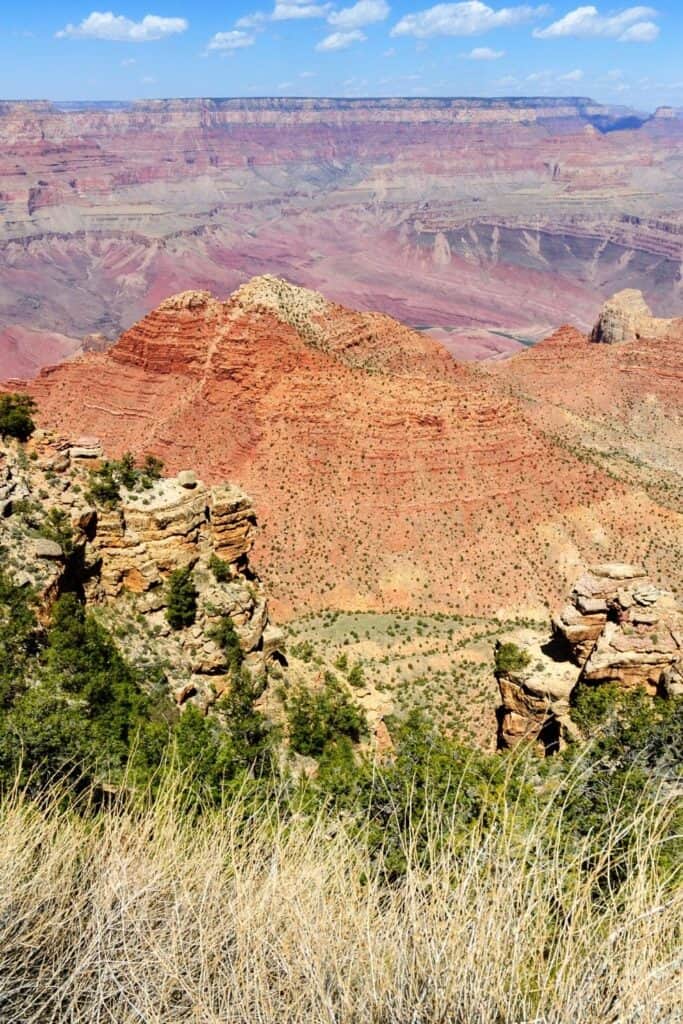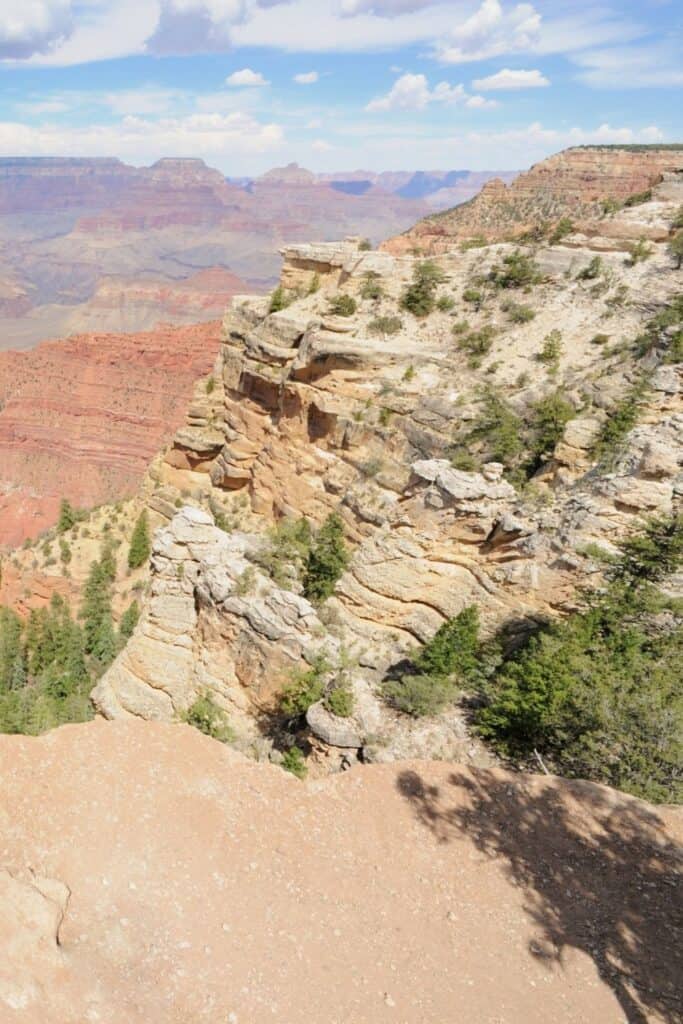While hiking the Grand Canyon, you’ll want to make sure you take enough water, snacks, and cell phone service. The rims offer cell service, but a cell phone is more useful when you’re alone. Bring a portable GPS if you’re a solo hiker. It’s important to stay within known boundaries, and to be flexible and adaptable. There are no signs that warn of cliffs or dangerous spots, so if you get lost, a GPS will help you find your way back.
If you plan to camp in the canyon, be prepared for the heat. At 7,000 feet above sea level, the walls of the Grand Canyon are hot and humid. The heat will dehydrate your body and brain. Having a tent will protect you from the sun’s rays, but you can still bring a lighter sleeping bag and use a bivy sack. A sturdy hiking boot, trekking poles, and a rain fly are also useful equipment, especially during the winter months.
If you’re planning on taking a longer trip, the North Kaibab Trail is a perfect choice. This 14-mile trail winds through eleven layers of ancient rock before ending on the sandy banks of the Colorado River. This hike is recommended for nature lovers. It’s a challenging but rewarding experience, and you must be in good physical condition before embarking on the adventure. It’s also important to secure an overnight permit well in advance.
Before hiking, read the National Park Service’s smart hiking tips and safety advice. A guidebook can be an excellent resource for information on hiking at the Grand Canyon. It’s a good idea to carry a hydration pack and plenty of food. Remember to hydrate and wear sunscreen before attempting any hiking adventure. And if you’re feeling weary, keep in mind that hiking can be tiring, especially in hotter weather.
While hiking the Grand Canyon is a great way to get to know the park’s unique landscape, it’s important to stay in good physical condition. A good guide will show you the best views and help you enjoy your trip more. A guide will also be able to recommend a safe route. There are many ways to get to the bottom of the canyon. This can be a challenging and sometimes hazardous hike, so be prepared for any unexpected risks.
If you’re planning to backpack the Grand Canyon, it’s a good idea to check out the back-country Information Center for permits and information about hiking routes. This will help you avoid any potential hazards, such as dangerous snakes and avalanches. If you are a first-time hiker, it’s a good idea to get a guidebook, as hiking at the Grand Canyon is a unique experience.
Grand Canyon National Park is a popular destination for tourists from around the world, famous for its breathtaking views, hiking trails, and outdoor activities. To ensure that visitors have a safe and enjoyable experience, the park has established a set of rules and regulations that all visitors are expected to follow. Here are some of the most important rules for visiting Grand Canyon National Park:
- Stay on designated trails: Visitors are required to stay on designated trails and walkways while in the park. This is to protect the delicate natural environment and prevent damage to the park’s geological formations.
- Leave no trace: Visitors are expected to practice “Leave No Trace” principles while in the park. This means packing out all trash and waste, and leaving natural and cultural resources undisturbed.
- Pets: Pets are allowed in the park, but they must be kept on a leash at all times and are not allowed on most trails. Visitors are also responsible for cleaning up after their pets.
- Camping: Camping is permitted in designated campgrounds only. Backcountry camping requires a permit, which can be obtained from the park’s visitor center.
- Wildlife: Visitors are reminded that the park is home to a variety of wildlife, including bears, mountain lions, and rattlesnakes. Visitors should always keep a safe distance from wildlife and never feed or approach them.
- Fire: Open fires are not permitted in the park, except in designated campfire areas. Visitors should also be cautious with cigarettes and other smoking materials, as wildfires can easily start in the dry desert environment.
- Permits: Certain activities, such as backcountry hiking and river trips, require permits. Visitors should obtain these permits in advance from the park’s visitor center.
- Commercial activities: Commercial activities, such as guided tours and photography workshops, are allowed in the park but require a permit. Visitors should also be aware that commercial filming and photography activities may be subject to additional regulations and fees.
- Safety: Visitors are responsible for their own safety while in the park. This includes staying on designated trails, bringing plenty of water and food, and being prepared for changing weather conditions.
- Historic sites and artifacts: Visitors should not disturb or remove any historic sites, artifacts, or fossils in the park. These items are protected by federal law and can result in fines and/or criminal charges if violated.
By following these rules and regulations, visitors can help protect the natural beauty of Grand Canyon National Park and ensure that it remains a safe and enjoyable destination for years to come.
Related posts:
The Grand Canyon is one of the most spectacular places on earth, and the South Rim is one of the most popular places to visit. There are a variety of things to see and do, including hiking the North and the South Rim. The views are incredible and you...
If you've ever wanted to experience the Grand canyon in its entirety, then you've come to the right place. This Arizona park contains much of the vast canyon and is filled with layered bands of red rock that reveal millions of years of geological his...
Grand Canyon rafting is a once-in-a-lifetime adventure that offers breathtaking scenery, thrilling rapids, and a chance to disconnect from the modern world and connect with nature. The Grand Canyon is one of the world's most iconic natural wonder...
The Grand Canyon Trail is an ideal place to explore the beauty of the natural world. It offers incredible scenery, but be careful: there are several dangerous situations you can face on this path. Dead snags, venomous snakes, and flash floods can occ...
Bright Angel Trail is one of the most popular hiking trails in the Grand Canyon National Park, and for good reason. This iconic trail offers hikers a chance to explore some of the most stunning natural scenery in the world, while also...
There are several trails to hike in the Grand Canyon. The Little Grand Canyon trail is 3 miles long and winds around the base of 300-foot bluffs. This moderate-to-difficult hike leads out of the canyon along a rocky creekbed. More advanced hikers wil...